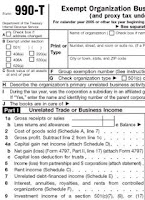Non-profit consultant and grant writer, Derek Link, writes about the trials of grant research:
I used to think that grant writing was the hardest part of grant work, but now I know the harder job is grant seeking. I spend a lot of time looking for grants as part of grant research contracts for nonprofit organizations. It is grueling work. There are so many considerations to look at and so many factors to consider before making a decision to approach a funder with a request. Even with a good search engine, it’s a little like going to the mall with your girlfriend to find that perfect something…for someone.
The rigor of the search process is sometimes hard for a client to understand. They’ll give me a project they want funding for and say something like, “Here find a grant for this video project. I know there’s TONS of money out there for X.” The implication is that finding grants will be easy-peasy-lemon-squeezy, anyone with Internet could find it!
So I embark on my research looking for organizations that will fund the topic, the format of the project, the intent and scope of the project, the geographic location of the project, and so on. I look for funders who are accepting applications, who still have money after the crash, who haven’t changed their fields of interest, who weren’t victims of Madoff.
Often, I’m holding a square peg and about 99% of the holes out there are round ones. It’s a mistake to hammer the grant request in, and it’s damaging to the funding process in several ways:
- A grant project usually represents the energy and ideas of a group or an individual. They’re excited about it and want to move it forward, but only grant money will allow the project to happen. When a bunch of bad leads are followed, time is wasted on writing letters of inquiry and proposals, energy is sapped from the project, and eventually most people give up on finding a grant entirely
- Funding agencies, on the other hand, do not appreciate getting applications that are irrelevant to their mission. They offer grant opportunities to fund their mission, they will only fund your project if it aligns well with their mission. So if they are funding round pegs, don’t try to fit a square one into the opportunity. Some funders simply refuse to accept applications because the bulk of applications they received when holding an open solicitation were way off base and simply wasted their staff’s time.
So, make sure that your project fits the funder before making any approach. Due diligence in grant research is the only way to identify a good match between your project and a funder’s mission, and it’s a grind folks!
——————————
Learn more about grant research by viewing one of the free grant research webinars at GrantGoddess.com.
Published by Creative Resources & Research http://grantgoddess.com
 I know this sounds like an elementary question to anyone who has worked in the non-profit field for any length of time. But for many people who are just starting a non-profit, this is an important question.
I know this sounds like an elementary question to anyone who has worked in the non-profit field for any length of time. But for many people who are just starting a non-profit, this is an important question.


